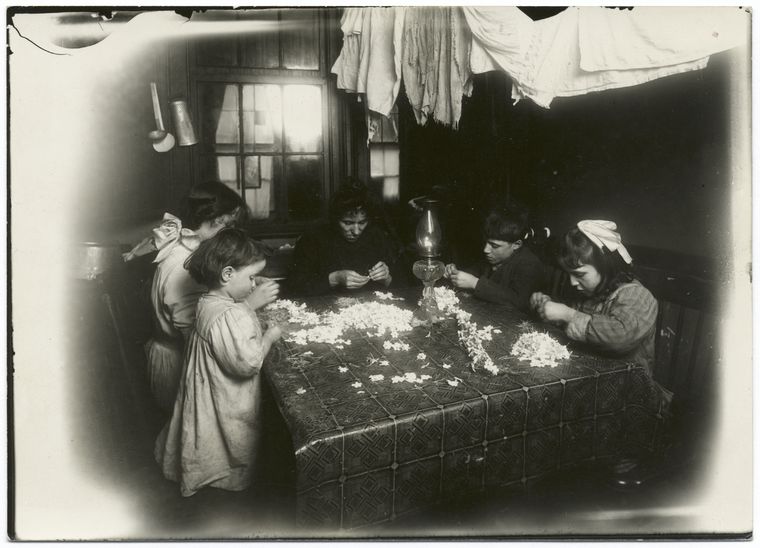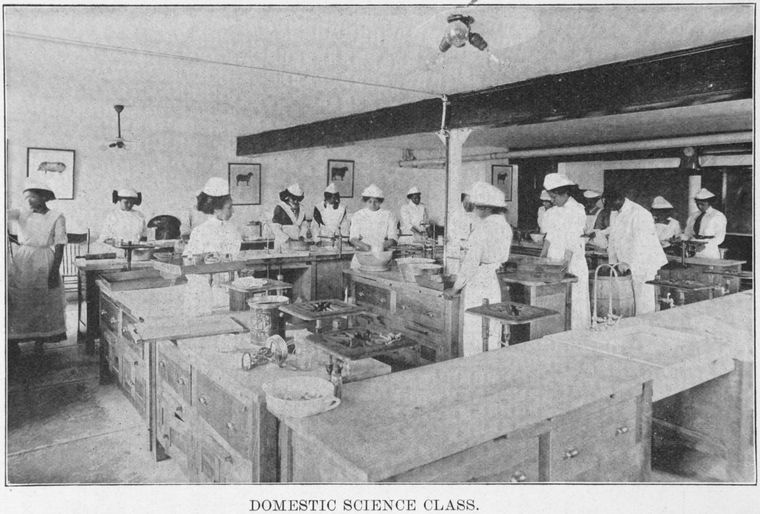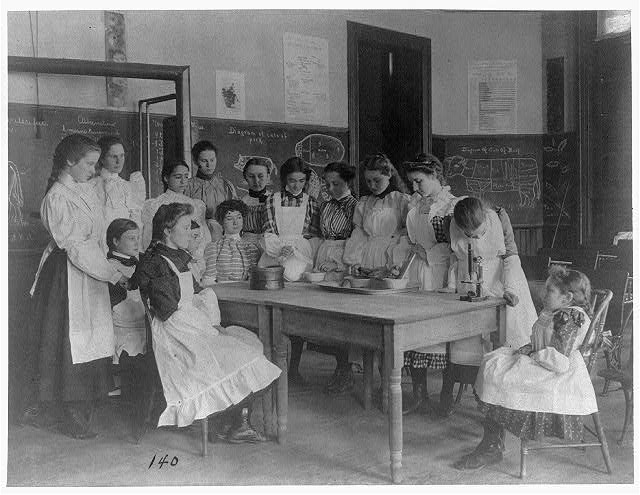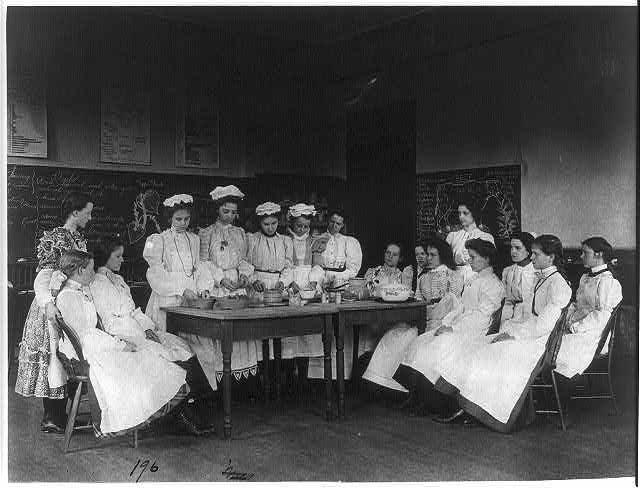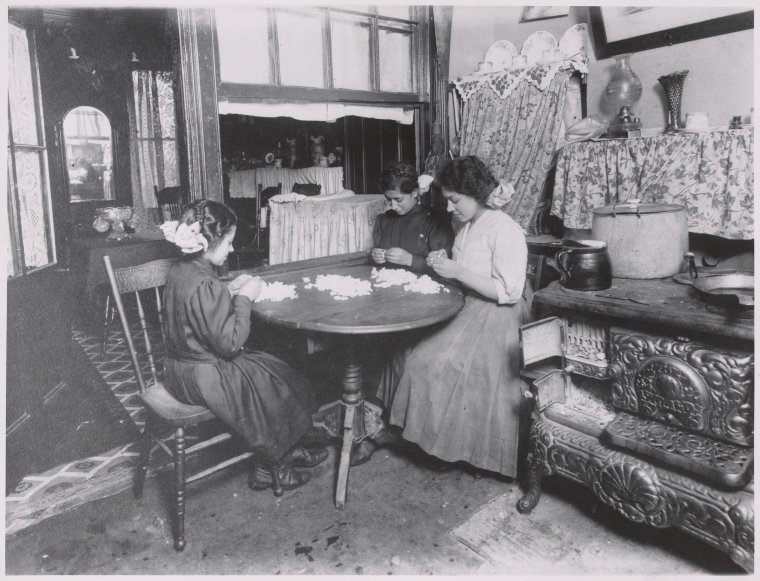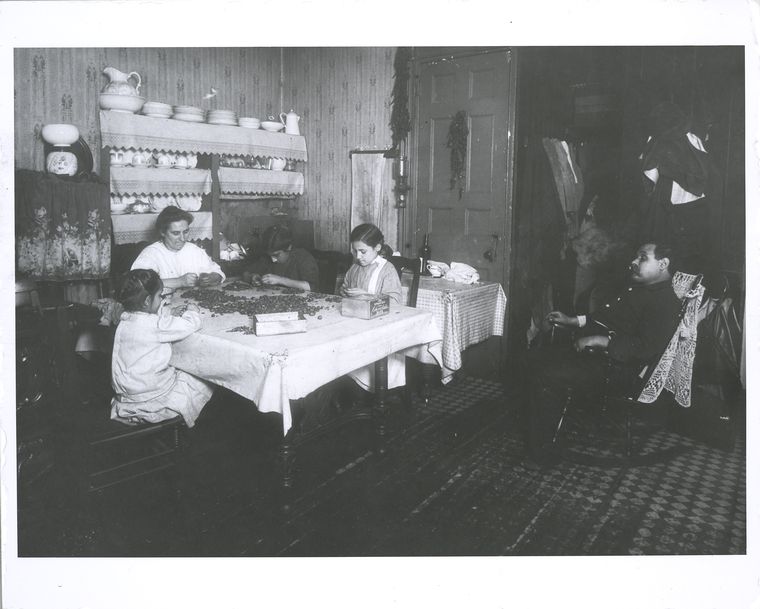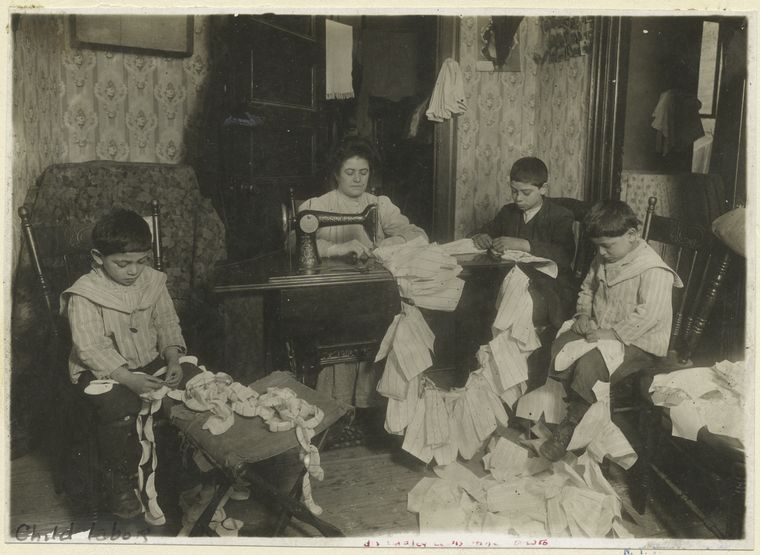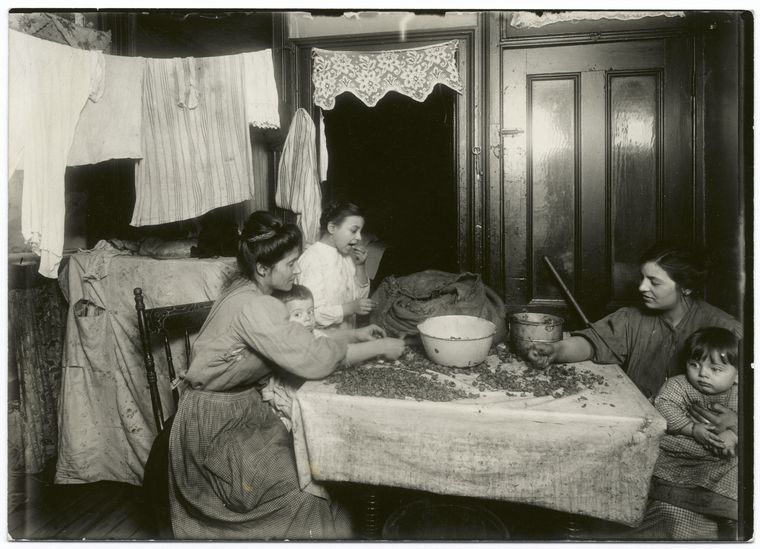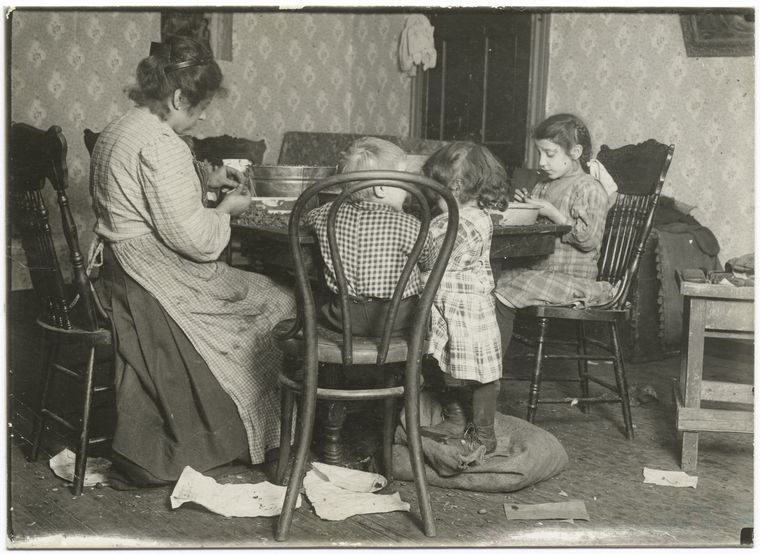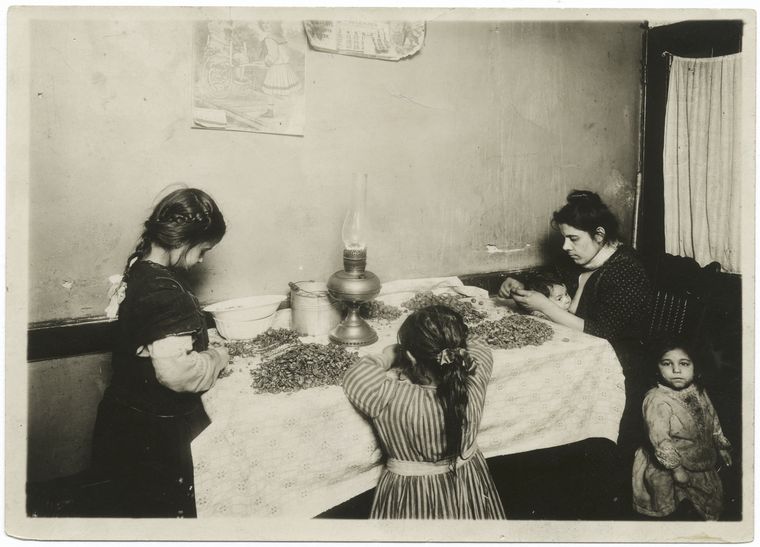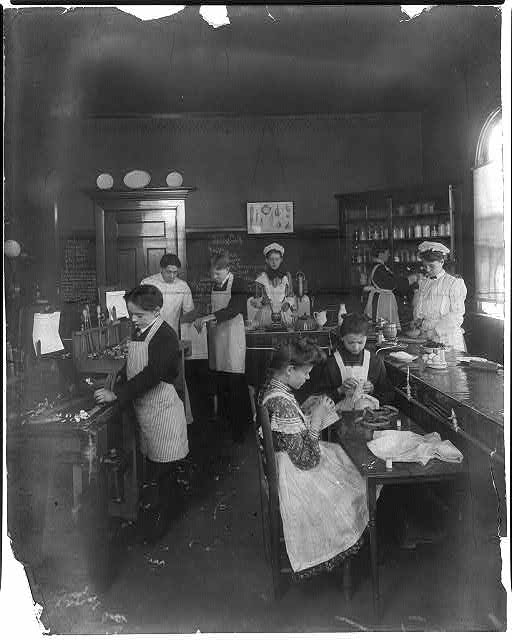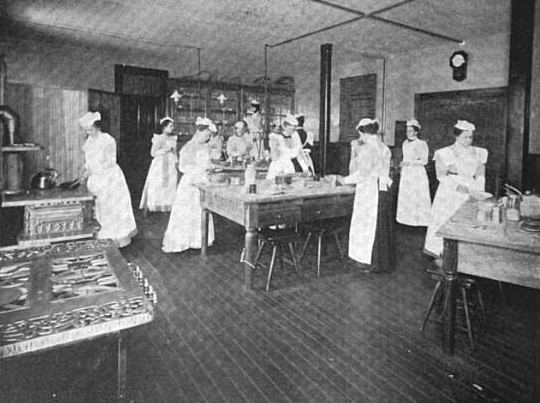By Anne M. Filiaci, Ph.D.
Mabel Hyde Kittredge’s domestic science classes at the Henry Street Settlement proved to be a great success. After a few years she founded the Association of Practical Housekeeping Centers (APHC), a separate and independent organization where she continued the work she’d begun through the Settlement. Lillian Wald encouraged the separation and acted as the APHC’s first director (in 1901). Eventually, Kittredge took over its management, and the APHC was incorporated in 1906. By 1911, Kittredge, as Superintendent, oversaw four model tenement apartments set up in various New York City neighborhoods under the auspices of APHC.
The flats were careful to cater to the different clientele that resided in each of the different locations. The one at 226 Henry Street, first formed as part of the “experiment” in 1901, was still in existence in 1911, and tailored its offerings specifically for the Jewish community. A 1902 issue of The American Journal of Nursing states that
Within the past six months the settlement has been extended as follows: Under the special supervision of Miss Mabel Kittridge an apartment in an ordinary tenement has been rented and suitably furnished, and with such accommodations as the people may have in their homes all the lessons are given in house-cleaning, home-making, laundry, and “domestic science” in general. The rooms, attractive in their simple, inexpensive furnishings, make also a wholesome “resort” for the members of the classes.
A Center at 162 Sullivan Street, established in September of 1905, accommodated its training to Italian immigrants. A third center, opened in March of 1906 at 543 West 49th Street, served the Irish and American-born population. For a time, Kittredge also operated a center that served the African American community, at 230 West 63rd Street. However, by 1911 this fourth center had relocated to 18 Jones Street, where the clientele was mainly Irish, Italian and French.
All of the centers “taught” the skills of “cleaning, disinfecting, actual purchasing of supplies in the shops of the neighborhood, household accounts, nursing, [and] all the elements of housekeeping.” By 1910, Kittredge could claim that the “teachers employed by the association” were all “trained…in domestic science.” The centers followed roughly the same schedule: “‘Each of our four housekeeping flats,’ explained Miss Kittredge, ‘has a resident teacher who holds classes in the afternoon and evening, composed of seven or eight girls from the neighborhood.”
The Handbook of Settlements, published in 1911, describes the services offered in some detail, and reveals that the centers had branched out from their original mission of training unmarried young women. Each APHC location, it states, “MAINTAINS two classes every day,” with the “number of pupils in each class” being
not less than six and not more than eight. Some of these classes take up the regular housekeeping work, others are demonstration cooking classes for women; special talks to mothers; special dinner classes; boys’ improvement club; waitresses, sewing and home nursing classes.
A newspaper article published in the New York Times in February of 1910 described a typical day at the Sullivan Street Center:
Here every afternoon and evening the classes of girls who are looking forward to having homes of their own some day go through the numberless details of housekeeping. They scrub the floors, they wash the dishes, they make the beds, they prepare the meals, they set a table—all under the supervision of a trained teacher in domestic science, who in turn gathers from the pupils many hints as to the special conditions and needs of the people of her neighborhood.
Some centers also provided “special classes” for “married women who seek information on matters of practical importance to themselves,” for the sum of “3 cents” a lesson. Staff at the centers also acted as financial advisors, helping individual housewives devise household budgets and giving hints on how to achieve cost savings. Staff also visited actual tenement flats on request to give suggestions on decorating and furnishing.
Kittredge was responsible for administrating the APHC and for raising the funds necessary to keep the Centers in operation, “most of the time with no secretarial assistance.” She was also “instrumental in establishing other model flats in New York City which have not been dependent on” the APHC “for their support.” She often cooperated with the New York City School system, and sometimes her centers were even absorbed into the school system’s curriculum. Wald wrote that:
Dr. Maxwell, Superintendent of Schools, always sympathetic and ready to fit instruction to the pupils’ needs, has encouraged the identification of these housekeeping centers with the schools. Whenever an enterprising principal desires it, the teachers of the nearby housekeeping center are made a part of the school system. Perhaps we may some day see one attached to every public school; and I am inclined to believe that, when institutions of higher learning fully realize that education is preparation for life, they too will wonder if the young women graduates of their colleges should not, like our little girl neighbors, be fitted to meet their great home making responsibilities.
While Kittredge eventually left the “nest” of the Henry Street Family, she never broke her ties with the Settlement, and the Settlement never totally gave up its influence on the APHC. Even as late as 1915, Wald was proud to reveal that “the admirable system of ‘Housekeeping Centers’” was “sustained and administered by a committee of men and women on which the settlement has representation.”
Bibliography
Davis, Allen F., Spearheads for Reform: The Social Settlements and the Progressive Movement, 1890-1914, New York, Oxford University Press, 1967, p. 46.
Deland, Margaret, “HOUSEKEEPER FOR POOR; Mabel Kittredge, Honored by Columbia, Is Founder of the Housekeeping Centres,” New York Times, August 04, 1935, (information from Abstract).
Dynes, Wayne R. and Stephen Donaldson, eds., Homosexuality and Government, Politics, and Prisons, (Studies in Homosexuality, v. X), NY: Garland Publishing, Inc., 1992, pp. 42-43.
“Editor’s Miscellany,” The American Journal of Nursing, Vol. 2, No. 12 (Sep., 1902), pp. 1042-1043.
Kittredge, Mabel Hyde, Practical Homemaking; A Textbook for Young Housekeepers, New York: Century Co., 1914, available for no charge as an ebook at Google books at link below: Link to site Current 7/25/18
“Teaching the Wives and Mothers of the Future: Unique Experiment in Four City ‘Housekeeping Centres.’” New York Times, Feb. 6, 1910.
Wald, Lillian D., The House on Henry Street, NY: Henry Holt & Co., 1915, pp. 107-109.
Wald, Lillian D., Lillian Wald Papers. New York: New York Public Library, 1983. See “Wald–Affiliations”:
Woods, Robert A. & Albert J. Kennedy, Handbook of Settlements (Russell Sage Foundation), NY: Charities Publication Committee, 1911, pp. 191-192.
Illustrations
Baker & Cornwall, photo, “A modern manual training school,” 1905 LOC Prints & photos, Link to Illustration Current 7/30/18
Johnston, Frances Benjamin, “[Girls posed in home economics class, 1st Division, Washington, D.C.]” Washington, DC, 1899? LOC Prints and Photographs, Link to Illustration Current 7/30/18
Johnston, Frances Benjamin, “[Home Economics Class,” 2nd Division]” Washington, DC, 1899? LOC Prints and Photographs, Frances Benjamin Johnston Collection, Link to Illustration Current 7/30/18
Johnston, Frances Benjamin, “Home Economics Class,” (1899?), Library of Congress Prints and Photographs Link to Illustration Current 7/30/18
The Miriam and Ira D. Wallach Division of Art, Prints and Photographs: Photography Collection, The New York Public Library. “Doing piece work at home making artificial flowers” The New York Public Library Digital Collections. 1900 – 1937. Link to Illustration Current 7/30/18
The Miriam and Ira D. Wallach Division of Art, Prints and Photographs: Photography Collection, The New York Public Library. “Doing piece work at home while father watches, New York tenement” The New York Public Library Digital Collections. 1900 – 1937. Link to Illustration Current 7/30/18
The Miriam and Ira D. Wallach Division of Art, Prints and Photographs: Photography Collection, The New York Public Library. “Mrs. Rena shelling nuts with a neighbor” The New York Public Library Digital Collections. 1900 – 1937. Link to Illustration Current 7/30/18
The Miriam and Ira D. Wallach Division of Art, Prints and Photographs: Photography Collection, The New York Public Library. “Making artificial flowers” The New York Public Library Digital Collections. 1900 – 1937. Link to Illustration Current 7/30/18
The Miriam and Ira D. Wallach Division of Art, Prints and Photographs: Photography Collection, The New York Public Library. “Sewing work at home” The New York Public Library Digital Collections. 1900 – 1937. Link to Illustration Current 7/30/18
The Miriam and Ira D. Wallach Division of Art, Prints and Photographs: Photography Collection, The New York Public Library. “Shelling nuts at home” The New York Public Library Digital Collections. 1900 – 1937. Link to Illustration Current 7/30/18
The Miriam and Ira D. Wallach Division of Art, Prints and Photographs: Photography Collection, The New York Public Library. “Shelling pecans at home” The New York Public Library Digital Collections. 1900 – 1937. Link to Illustration Current 7/30/18
Schomburg Center for Research in Black Culture, Manuscripts, Archives and Rare Books Division, The New York Public Library. “Domestic Science class.” The New York Public Library Digital Collections. 1915. Link to Illustration Current 7/30/18
“YWCA Domestic Science Class,” Boston Young Women’s Christian Association, American Kitchen Magazine, Nov. 1902, Wikimedia Commons Link to Illustration Current 7/30/18
Copyright Anne M. Filiaci 2018
